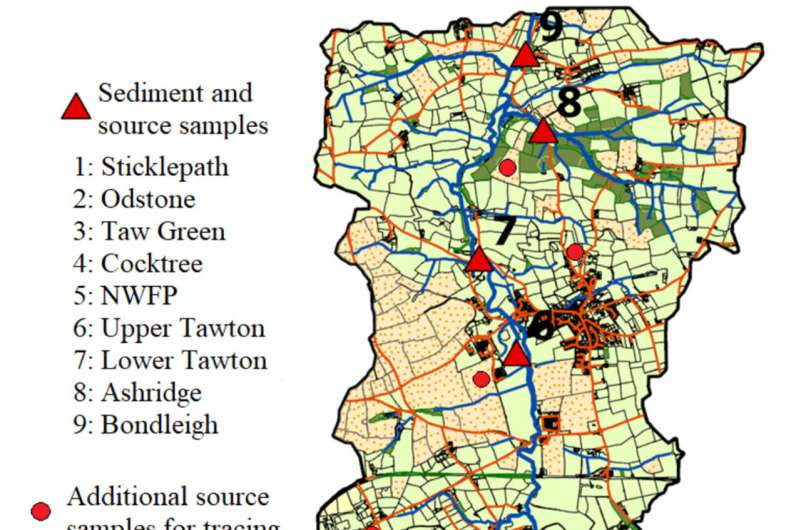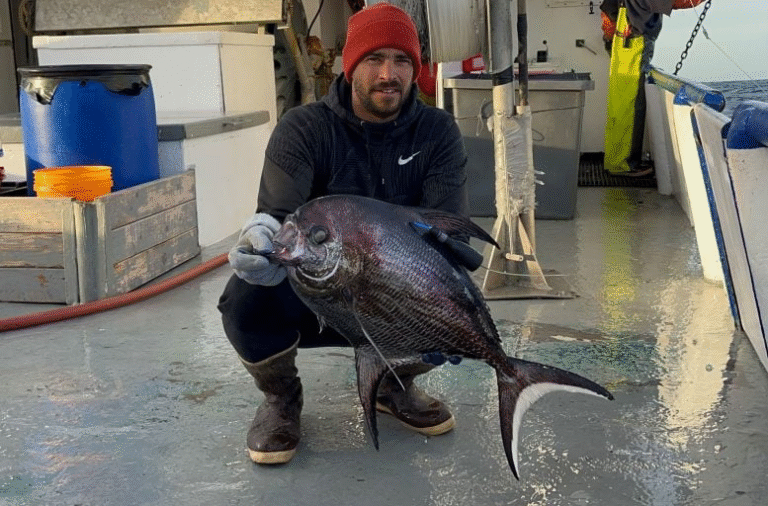Fine Sediments in Rivers Are Suffocating Fish Habitats, Says New UK Study

A new study from Rothamsted Research has revealed that a hidden yet serious threat is lurking in many rivers — ultra-fine sediment clogging the gravel beds where fish spawn and invertebrates live. The research, published in the journal River Research and Applications, focused on the River Taw in Devon, UK, and found that the smallest sediment particles, often less than 25 micrometres (μm) in size, are creating oxygen-starved conditions beneath the riverbed.
These particles are so fine that they slip deep into the tiny pores between gravel and stones — the same spaces where fish eggs and larvae depend on a constant flow of oxygenated water. Once trapped, the sediments block natural pore spaces and carry organic material like decaying algae, which consumes oxygen as it decomposes. The result: double trouble for aquatic life — physical suffocation and chemical oxygen depletion.
What the Study Found
The researchers measured Sediment Oxygen Demand (SOD) — a key indicator of how much oxygen is consumed by the organic material in the sediment — at nine different sites along the River Taw. These sites represented a range of landscapes, from upland grasslands with minimal human impact to lowland farmlands exposed to wastewater discharges and agricultural runoff.
Surprisingly, the study found that oxygen demand in riverbed sediments remained high across all sites, regardless of whether the surrounding land was intensively farmed or not. In simpler terms, even the cleaner upland sites showed high oxygen consumption in their riverbeds. This suggests that the problem isn’t just what’s coming off the land, but what’s happening within the river itself.
The analysis showed that the smallest sediment particles — especially those under 25 μm — were the main culprits. These fine sediments settle into the gravel beds and trap decomposing organic matter, including algae, which drives oxygen levels down. The researchers found that trapped algal material was a major contributor to this oxygen demand.
Why Oxygen Matters So Much
Fish, particularly species that lay eggs in gravel (like salmon and trout), rely on oxygen-rich water flowing through these spaces. When fine sediment blocks those tiny gaps, oxygen can’t reach the eggs. At the same time, microbes feeding on organic matter use up what little oxygen remains. This combination can suffocate fish eggs and larvae, reducing their survival rates and ultimately harming the river’s entire ecosystem.
It’s not just fish that are at risk. Many freshwater invertebrates, such as mayfly and caddisfly larvae, live in these same interstitial spaces and are equally vulnerable to oxygen shortages. These species are vital to river ecosystems — they recycle nutrients and serve as a primary food source for fish.
When sediment and organic material fill up the riverbed, the entire aquatic community suffers. Over time, this can alter the balance of the ecosystem, favoring species that tolerate low oxygen (like worms and midges) over those that need clean, oxygenated conditions.
Understanding Sediment Oxygen Demand (SOD)
Sediment Oxygen Demand is a measure of how much oxygen is consumed as organic matter decomposes within the sediment. High SOD means that oxygen is being used up faster than it can be replenished — a clear sign of biological and chemical stress in aquatic habitats.
In this study, SOD levels were consistently higher in the riverbed sediment than in sediments collected from upstream sources, such as eroding banks or runoff. This indicates that something within the river — likely algal growth and organic accumulation — is intensifying the oxygen drain once sediments settle.
Even more intriguingly, SOD didn’t increase in downstream areas with more intensive farming, suggesting that catchment management alone can’t solve the problem. The river’s own physical and biological processes — how sediment settles, how algae grow, how water flows through gravel — all play crucial roles in oxygen depletion.
The Bigger Picture: Nutrients, Sediment, and River “Breathing”
One of the study’s most important takeaways is that reducing sediment input alone won’t be enough. To truly fix oxygen-depleted riverbeds, we need to address both sediment and nutrient management.
Nutrients like nitrogen and phosphorus — often coming from fertilizers, manure, or wastewater — stimulate algal growth in rivers. When algae die, they settle into the sediment and decay, consuming oxygen in the process. This nutrient-fueled “algal snow” then gets trapped within fine sediments, worsening the oxygen demand problem.
The researchers suggest a combined management strategy:
- Reduce nutrient inputs to curb excessive algal growth.
- Limit fine sediment losses from farmland and eroding riverbanks.
- Improve riverbed conditions so that fine sediments don’t get trapped easily — for example, by maintaining coarser gravel beds and ensuring natural flow variability to flush out silt.
Healthy riverbeds should be able to “breathe” — allowing oxygen-rich water to circulate through their pores. When those pores are clogged with fine sediment and decomposing organics, that breathing stops.
Why the River Taw Matters
The River Taw, located in Devon, is a typical agricultural catchment — a mix of pastoral uplands and more intensively farmed lowlands. It’s home to several freshwater fish species, including Atlantic salmon and brown trout, both of which depend on clean, oxygenated gravels for spawning.
This makes the Taw an ideal case study for understanding broader problems affecting rivers across the UK and beyond. The findings suggest that even seemingly healthy rivers can harbor oxygen-depleted “dead zones” within their beds — invisible to the eye but deadly to the life beneath.
The Broader Context: Fine Sediment and River Health
Fine sediment pollution is one of the most widespread pressures on rivers worldwide. It doesn’t look as dramatic as sewage spills or algal blooms, but it can be just as destructive. Fine sediments:
- Smother habitats by filling spaces between gravel and stones.
- Reduce water clarity, affecting photosynthesis and temperature regulation.
- Transport nutrients and contaminants, making them harder to manage.
- Fuel oxygen depletion, as seen in the River Taw study.
Human activities — from plowing fields and clearing vegetation to discharging wastewater — all contribute to fine sediment buildup. Once these particles enter the river, they are incredibly hard to remove, often persisting for years and continually trapping organic matter.
Effective control requires coordinated catchment management, where farmers, wastewater operators, and conservationists work together to minimize both sediment and nutrient inputs.
Managing for the Future
The researchers highlight that reducing in-stream productivity, such as algal growth, is difficult to achieve directly. Instead, prevention is key — tackling the sources of nutrients and sediments before they reach the river.
Practical solutions could include:
- Creating vegetated buffer strips along waterways to trap soil runoff.
- Stabilizing eroding banks to prevent sediment release.
- Upgrading wastewater treatment to reduce nutrient discharges.
- Restoring natural flow regimes that can flush excess fine sediment.
Restoration projects should focus on maintaining the right mix of gravel sizes in riverbeds. Coarser materials allow better water flow and oxygen exchange, while finer material traps organic matter and blocks that flow. Managing the balance of sediment size is essential for healthy spawning grounds.
What This Means for River Conservation
This study reinforces that river ecosystems are deeply interconnected. Land use, nutrient management, and in-stream processes all influence one another. Tackling any single issue in isolation rarely works.
As public and political attention in the UK increasingly focuses on freshwater quality, studies like this one provide valuable insights for evidence-based management. They show that safeguarding rivers requires both scientific understanding and practical action — from how we farm to how we treat our wastewater.
Ultimately, the River Taw study reminds us that even the smallest particles can have big consequences. A few micrometres of sediment can be the difference between a thriving fish habitat and an oxygen-starved graveyard beneath the riverbed.
Research Reference:
Pulley, S. et al. (2025). Longitudinal Variability in the Oxygen Demand of Channel Bed Matrix Sediment in a UK Agricultural Catchment: Implications for Managing the Sediment Problem. River Research and Applications. Read the full paper here





